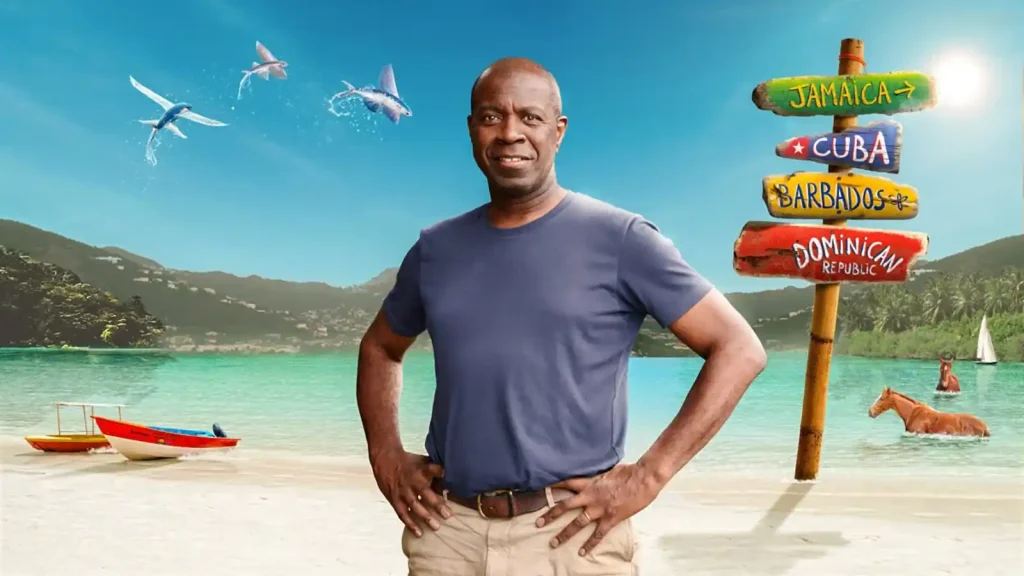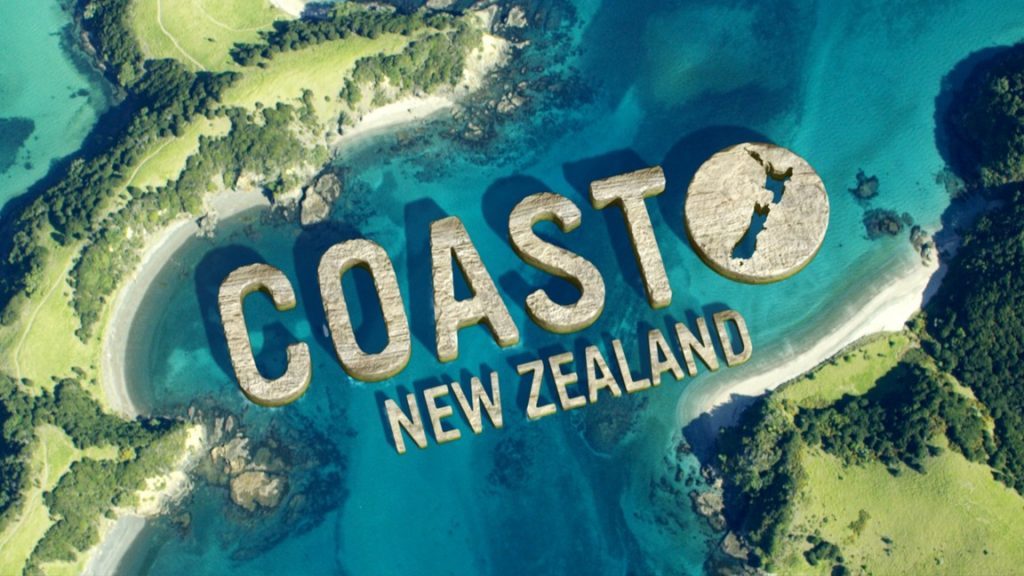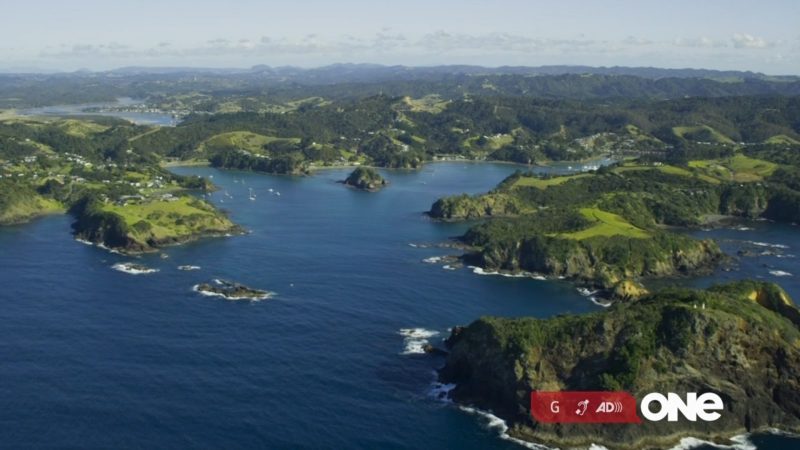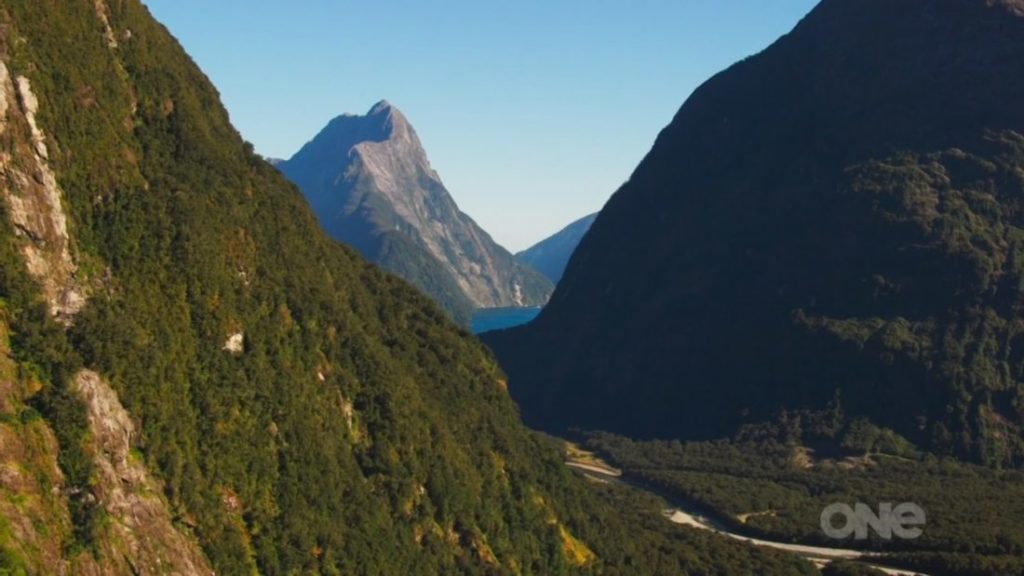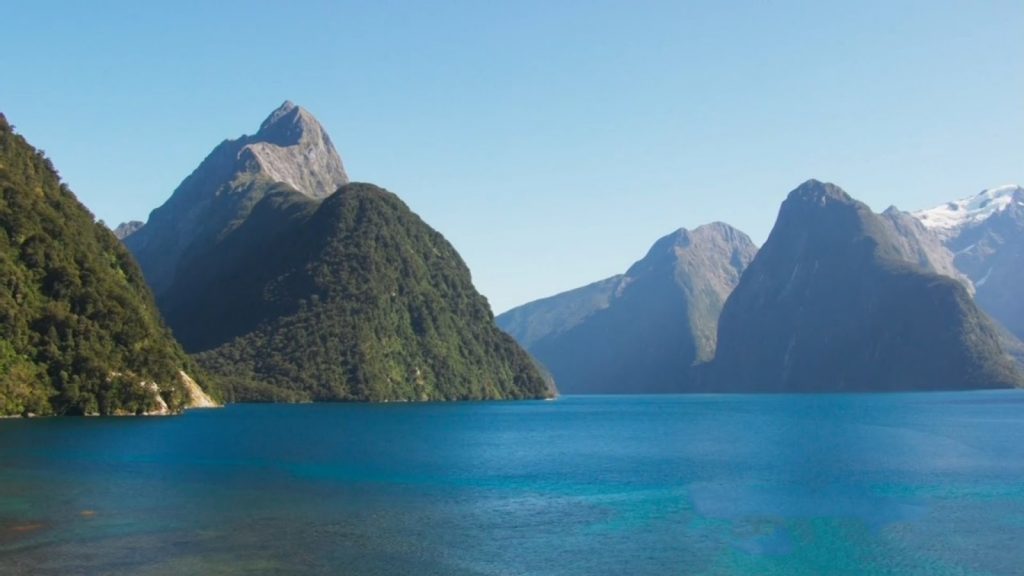Clive Myrie’s Caribbean Adventure episode 10: Clive Myrie embarks on an exhilarating journey to the easternmost tip of Cuba, immersing himself in the rich tapestry of history and culture that defines the island’s oldest city, Baracoa. This episode of Clive Myrie’s Caribbean Adventure showcases a vibrant blend of exploration, tradition, and culinary delights, weaving a captivating narrative that transports viewers to a lesser-known corner of the Caribbean.
Baracoa, a city shrouded in mystique and tradition, holds the distinction of being Cuba’s oldest settlement, founded by Spanish explorer Diego Velázquez in 1511. Its isolation, due to the lack of proper road access until the 1960s, has preserved much of its unique character and heritage. To truly appreciate the ingenuity and resilience of Baracoa’s early inhabitants, Clive undertakes the ambitious project of building his own traditional bamboo raft. This endeavor not only offers a glimpse into the past but also provides a hands-on understanding of how the locals navigated the region’s waterways before modern infrastructure connected this remote city to the rest of the island.
Navigating the serene waters on his handmade raft, Clive delves into the history and lifestyle of the indigenous Taíno people, who thrived in this area long before European contact. The Taíno’s rich cultural legacy is evident in their art, agriculture, and societal structures, all of which Clive explores with keen interest. Through his interactions with local historians and artisans, he uncovers stories of survival and adaptation that have been passed down through generations, shedding light on how the Taíno managed to endure the challenges of their environment and the arrival of colonizers.
Food is a central theme in any cultural exploration, and Clive’s journey in Baracoa is no exception. He lends a hand in the kitchen of a remarkable eatery believed to be Cuba’s only fully vegan restaurant. This culinary adventure is not just about preparing a meal; it’s a deep dive into the island’s agricultural bounty and the innovative ways locals create flavorful dishes without relying on animal products. The restaurant’s commitment to sustainability and health-conscious eating resonates with Clive, as he discovers the vibrant flavors and nutritional richness that plant-based cuisine can offer.
Clive Myrie’s Caribbean Adventure episode 10
The narrative takes a sweet turn when Clive meets the ‘queen of chocolate,’ a local chocolatier renowned for her exquisite creations. Baracoa’s climate and fertile soil make it an ideal location for cacao cultivation, and Clive indulges his sweet tooth while learning about the meticulous process of turning cacao beans into delectable chocolate. The queen of chocolate shares her passion for this craft, highlighting the importance of sustainable practices and fair trade in the production of high-quality chocolate. This encounter not only satisfies Clive’s cravings but also provides insight into the economic and cultural significance of cacao in Baracoa.
Throughout the episode, Clive’s genuine curiosity and enthusiasm bring the stories of Baracoa to life. His interactions with the locals reveal the warmth and hospitality that define the community, offering viewers a glimpse into the daily lives of those who call this historic city home. From the rhythmic beats of traditional music to the vibrant colors of local festivals, Baracoa emerges as a place where history and modernity coexist in a harmonious blend.
Clive Myrie’s exploration of Baracoa is a testament to the city’s enduring spirit and cultural richness. By building a bamboo raft, preparing vegan dishes, and savoring artisanal chocolate, he connects with the heart and soul of this unique destination. Each experience adds a layer of depth to the narrative, painting a comprehensive picture of Baracoa’s past, present, and future.
In summary, Clive Myrie’s Caribbean Adventure episode 10 offers an immersive and enriching experience, capturing the essence of Baracoa through its history, cuisine, and local traditions. It is an invitation to viewers to explore beyond the usual tourist paths and discover the hidden gems that make Baracoa a treasure trove of cultural heritage. As Clive’s journey unfolds, it becomes clear that Baracoa is not just a city but a living testament to resilience, innovation, and the enduring spirit of its people.
Caribbean Adventure episode 10
Overview of Clive Myrie’s Caribbean Adventure
Clive Myrie’s Caribbean Adventure is more than just a travel series; it’s a heartfelt exploration of the Caribbean’s vibrant culture, rich history, and captivating landscapes. From bustling cities to serene villages, each episode offers viewers a window into the diverse and dynamic life that flourishes on these islands. Clive’s journey is a tapestry of personal connections, historical revelations, and cultural immersion that paints a vivid picture of the Caribbean’s enduring charm.
Clive’s Connection to the Caribbean
Clive’s ties to the Caribbean run deep. His parents moved from the Caribbean to Britain before he was born, bringing with them the vibrant culture and traditions of their homeland. Clive’s childhood was infused with the colors, sounds, and tastes of the Caribbean, making his return to these islands a deeply personal journey. Family holidays to the Caribbean were a cherished tradition, filled with memories that Clive fondly recalls. This series is a way for him to reconnect with his roots and share the magic of the Caribbean with a wider audience.
The Historical Significance of Baracoa
Baracoa, located at the easternmost tip of Cuba, holds the title of the island’s oldest city. Founded in 1511 by Spanish explorer Diego Velázquez, Baracoa is a living museum of Cuban history. Its remote location, cut off from the rest of the island until the 1960s, has preserved its unique charm and traditions. This isolation allowed Baracoa to retain much of its historical and cultural essence, making it a fascinating destination for those interested in the rich tapestry of Cuban heritage. Visitors can feel the weight of history in the air, from the ancient stone streets to the lush tropical landscapes that surround the city.
Discovering Baracoa’s Unique Traditions and Culture
Building a Traditional Bamboo Raft
Constructing a bamboo raft in Baracoa is not just an activity—it’s a step back in time. Clive Myrie, ever the intrepid explorer, takes on this task to understand how the locals traversed the rivers before the advent of modern roads. The process begins with selecting sturdy bamboo from the lush riverbanks, each piece carefully chosen for its strength and flexibility.
As Clive and his guide, Luis, tie the bamboo together with strong, weather-resistant ropes, the significance of this traditional craft becomes evident. This method, unchanged for centuries, symbolizes the resilience and ingenuity of Baracoa’s people. Each knot and lash speaks of generations past, who depended on these rafts to navigate the often unpredictable waterways. It’s a labor-intensive process, but one that connects Clive deeply to the island’s history and its people’s enduring spirit.
The Indigenous Taíno People
The Taíno people, indigenous to Baracoa, offer a glimpse into a world long before Spanish colonization. Despite the widespread belief that they were entirely wiped out, remnants of their culture and descendants still thrive in this isolated region. Clive’s journey into Taíno heritage is a poignant reminder of survival and resilience.
Meeting with local historians and artisans, Clive unearths the stories of the Taíno’s adaptation and resistance. From their intricate basket weaving to the construction of hurricane-resistant homes, the Taíno’s ingenuity shines through. These ancient techniques, passed down through generations, not only preserve their heritage but also offer practical solutions for modern-day challenges. Clive’s interactions bring these historical narratives to life, showcasing a rich cultural tapestry that has withstood the test of time.
Cuba’s Only Fully Vegan Restaurant
In a country where meat is a staple, Aristides Smith’s vegan restaurant in Baracoa is a beacon of innovation and sustainability. Clive steps into this unique culinary haven, greeted by a garden bursting with organic produce. Aristides, with his passion for plant-based cuisine, has transformed his small farm into a sanctuary of fresh, local ingredients.
Together, Clive and Aristides harvest vibrant vegetables and aromatic herbs, their hands working in tandem with the earth. The restaurant’s menu, devoid of any animal products, is a celebration of nature’s bounty. From crunchy manioc to fragrant turmeric, each dish is a testament to the possibilities of vegan cooking. The dining experience here is not just about food; it’s about embracing a lifestyle that respects and nurtures the environment. Clive’s culinary journey in this restaurant opens a window to the future of sustainable eating in Cuba.
The Queen of Chocolate
Baracoa’s reputation as the cacao capital of Cuba is well deserved, thanks in large part to Deisy Pelegrin Cobas, the ‘queen of chocolate.’ Clive’s visit to her cacao farm is a sensory delight, filled with the rich aroma of roasting beans and the vibrant sights of cacao pods ready for harvest. Deisy’s all-female team embodies the strength and dedication required to produce some of the world’s finest cacao.
The process, from bean to bar, is both art and science. Clive participates in each step, from harvesting the pods to fermenting and roasting the beans. The final product, a luscious drink called chorote, is a tribute to Baracoa’s cacao heritage. Sipping this traditional beverage, Clive feels the deep connection between the land and its people, understanding how cacao has shaped the economy and culture of this region. This chocolate journey is not just about satisfying a sweet tooth; it’s about appreciating the hard work and passion that goes into every bean.
In each of these experiences, Clive Myrie’s immersion in Baracoa’s unique traditions and culture paints a vivid picture of a community that honors its past while embracing the future. Through building, cooking, and crafting, he uncovers the stories and skills that define this remarkable part of Cuba.
Experiencing Baracoa’s Modern and Historical Lifestyles
Staying at a Casa Particular
Staying at a casa particular in Baracoa is like stepping into a cozy embrace of Cuban hospitality. These private bed and breakfast establishments offer an intimate glimpse into local life, far removed from the sterile experience of large hotels. Clive’s hosts, Roberto and Manuel, welcome him with open arms, their warmth and friendliness setting the tone for his stay.
Roberto and Manuel’s home, Villa Paradiso, lives up to its name with stunning views of Baracoa’s lush landscape. Nestled amidst tropical greenery, the casa offers breathtaking vistas from every angle. Guests often find themselves lingering on the terrace, captivated by the panoramic beauty. The tranquil atmosphere and personal touches, from home-cooked breakfasts to engaging conversations, create an experience that feels both luxurious and homely.
Exploring the River Duaba
The River Duaba, one of Baracoa’s most enchanting sights, winds through the region like a silver thread weaving through a lush tapestry. Clive’s adventure here starts with meeting Luis, a seasoned river guide known for his deep knowledge of local waters. The river, framed by verdant foliage and dotted with bamboo rafts, offers a serene yet exhilarating journey.
Luis shares stories of the river’s history, highlighting how it has been a lifeline for the community for centuries. Navigating the gentle currents on a bamboo raft, Clive experiences firsthand the traditional methods still in use today. The calm waters mirror the sky, creating a surreal, almost dreamlike setting. Each bend in the river reveals new vistas, from cascading waterfalls to hidden groves, making the journey as much about discovery as it is about travel.
The Resilience of the Taino People
In a remote village near Baracoa, the legacy of the Taino people lives on. Clive’s visit here is a journey into the past, where he meets Maritza and her family, direct descendants of the Taino. Their home is a living museum of traditional crafts and knowledge, preserving techniques that have been passed down through generations.
Maritza demonstrates the intricate art of basket weaving, her hands moving with practiced ease. The materials, sourced from the surrounding environment, reflect the Taino’s deep connection to the land. Clive attempts to weave under Maritza’s patient guidance, feeling the history woven into each strand. The experience is a poignant reminder of the Taino’s enduring presence and the importance of preserving their cultural heritage.
Culinary Delights of Baracoa
Baracoa’s culinary scene is a vibrant mosaic of flavors, shaped by its unique microclimate and diverse cultural influences. Clive’s gastronomic journey begins in the bustling local markets, where fresh produce overflows from every stall. The array of fruits, vegetables, and spices is a testament to the region’s agricultural bounty, despite the challenges of import reliance.
From the market, Clive moves to a traditional kitchen, where local cooks transform these raw ingredients into culinary masterpieces. He learns the secrets of making dishes like torta guanaco and chorote, each bite offering a taste of Baracoa’s rich heritage. The combination of fresh ingredients and time-honored recipes creates a dining experience that is both delicious and deeply rooted in tradition. The joy of sharing these meals with locals adds a layer of connection, making every meal a celebration of community and culture.
In Baracoa, every experience, from staying in a casa particular to exploring the river and embracing the resilience of the Taino, weaves a narrative of discovery and connection. It’s a place where history and modernity coexist, offering visitors a unique glimpse into the heart and soul of Cuba.
FAQs Clive Myrie’s Caribbean Adventure episode 10
What is the significance of Baracoa in Cuban history?
Baracoa, established in 1511, is the oldest city in Cuba. Its historical importance is deeply rooted in its early role as the island’s first settlement. Founded by Spanish explorer Diego Velázquez, Baracoa served as the initial foothold for Spanish colonization. Over centuries, its relative isolation helped preserve its unique culture and historical landmarks, making it a living museum of Cuba’s rich past. Christopher Columbus himself marveled at its beauty, which he described as “enchantingly beautiful” when he first laid eyes on it.
How did the indigenous Taíno people survive colonialism?
The Taíno people, indigenous to the Caribbean, faced near extermination due to Spanish colonization. However, many survived through adaptation and resilience. They integrated with other populations, preserving their heritage through oral traditions, crafts, and agricultural practices. In Baracoa, descendants of the Taíno continue to maintain these traditions, offering a living link to their ancestors. This survival is a testament to their resilience, despite the challenges of colonialism and disease brought by Europeans.
What makes Aristides Smith’s vegan restaurant unique?
Aristides Smith’s vegan restaurant stands out as Cuba’s only fully vegan establishment. Located in Baracoa, it thrives on sustainability and organic farming. Aristides grows all his produce on a small farm, ensuring that the food is fresh and free from chemicals. This commitment to self-sufficiency is revolutionary in a country heavily reliant on imported food. The restaurant’s innovative dishes highlight the flavors of local ingredients, providing a unique dining experience that aligns with a global shift towards plant-based diets.
How is chocolate traditionally made in Baracoa?
Baracoa is renowned for its chocolate, with a tradition that dates back centuries. The process begins with the harvesting of cacao pods, which are then fermented and dried. Once dried, the beans are roasted to develop their rich flavor. The roasted beans are ground into a paste, which can be formed into bars or mixed with other ingredients to create traditional drinks like chorote. This artisanal method preserves the integrity and flavor of the cacao, making Baracoa’s chocolate highly prized.
Why is staying at a casa particular in Baracoa recommended?
Staying at a casa particular in Baracoa offers an authentic Cuban experience. These family-run bed and breakfasts provide personalized hospitality that large hotels cannot match. Guests enjoy the warmth and charm of Cuban culture, with hosts often sharing stories, cooking tips, and local insights. Additionally, casas particulares are often situated in picturesque locations, offering stunning views and a more intimate connection to the surroundings. This form of accommodation supports local families and enriches the visitor’s experience through cultural exchange.
Conclusion Clive Myrie’s Caribbean Adventure episode 10
Reflections on the Adventure
Clive Myrie’s journey through Baracoa has been an exploration of not just a place, but a vibrant tapestry of history, culture, and resilience. Each experience, from building a bamboo raft to sampling vegan delights, has been a step deeper into the heart of this remarkable city. Baracoa, with its blend of ancient traditions and modern adaptations, stands as a testament to the enduring spirit of its people.
As Clive navigates the city’s winding streets and lush landscapes, he uncovers stories that resonate with universal themes of survival, creativity, and joy. The people of Baracoa, with their warmth and hospitality, have shared their lives and traditions, offering a glimpse into the true essence of Cuba. This journey is a celebration of life in all its forms, a reminder of the beauty and strength that come from embracing one’s heritage while looking to the future.
The Future of Baracoa
Baracoa’s future is as rich and diverse as its past. As more people discover this hidden gem, the potential for sustainable tourism grows. This could bring much-needed economic benefits while preserving the city’s unique cultural and natural heritage. The efforts of individuals like Aristides Smith and Deisy Pelegrin Cobas, who are innovating within their traditions, show a path forward that balances progress with preservation.
However, this balance is delicate. The challenge lies in ensuring that development does not come at the cost of Baracoa’s charm and authenticity. Local initiatives that prioritize eco-friendly practices and community involvement will be crucial. Baracoa’s story is still being written, and with thoughtful stewardship, it can continue to enchant and inspire for generations to come.
Final Thoughts
The adventure in Baracoa has been a journey of discovery and connection. It is a place where history whispers through the stones and the future blooms in vibrant colors. From the resilient spirit of the Taíno people to the innovative minds shaping the culinary landscape, Baracoa is a microcosm of the Caribbean’s rich and diverse heritage.
For those seeking an authentic experience, Baracoa offers a profound connection to the past and an inspiring vision for the future. It invites you to slow down, savor each moment, and immerse yourself in the stories that shape this extraordinary place. As Clive Myrie’s adventure draws to a close, it leaves us with a deeper appreciation for the beauty and complexity of life in Baracoa, a true treasure of the Caribbean.
